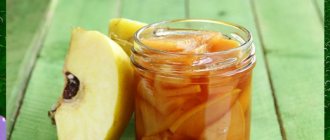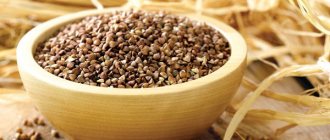What transport can you use during pregnancy?
All iLive content is reviewed by medical experts to ensure it is as accurate and factual as possible.
We have strict sourcing guidelines and only link to reputable sites, academic research institutions and, where possible, proven medical studies. Please note that the numbers in parentheses ([1], [2], etc.) are clickable links to such studies.
If you believe that any of our content is inaccurate, out of date, or otherwise questionable, please select it and press Ctrl + Enter.
During pregnancy, not only happy moments await a woman. Unfortunately, the expectant mother also faces problems. One of them is pregnancy and transport. When using public transport, a woman often experiences nausea, dizziness, motion sickness, and headache. She comes into unwanted contact with patients, runs the risk of injury and, surprisingly, encounters misunderstanding and rejection from other passengers.
Public transport and pregnancy
Public transport and pregnancy need to be somehow combined for all expectant mothers living in big cities. Otherwise, it is impossible to travel long distances, even with a personal car. After all, traffic jams are a real scourge of modern megacities.
Unfortunately, pregnancy and transport don’t mix well. When traveling in crowded minibuses and buses, a woman may feel overwhelmed, suffer from dizziness and nausea, faint and even vomit. The causes of such ailments are toxicosis and anemia, as well as hormonal changes that provoke pressure surges.
It is advisable to learn to control your condition and avoid extremes, in particular, fainting. At the first sign of threatening symptoms, a woman should go outside before reaching the desired stop. If the fresh air does not make you feel better, you should ask passers-by for help.
If you cannot go out, it is advisable to open the window, unfasten tight clothes, breathe deeper, and, if possible, lie down. When dizziness recurs regularly, it is recommended to carry ammonia with you.
If you experience a headache while traveling in public transport, you need to remove your hat and lightly massage the sore spot until the pain goes away.
To prevent infection with viruses, especially during the cold season, it is useful for expectant mothers to use oxolinic ointment or a mask. An important place in the prevention of colds is strengthening the immune system with the help of vitamins, garlic and onions (in small doses).
Injuries pose a serious danger to women expecting a child. They threaten a pregnant passenger during sharp turns, braking and other vehicle maneuvers.
To avoid such risks, it is better for a woman not to use transport during rush hours, ride only while sitting, and do not rush to get on and off at stops. In the subway, do not stand on the edge of the platform, walk in the direction of travel, and do not ride the escalator. During this period, shoes should be worn with comfortable heels.
Experts advise women not to be modest and, if they do not pay attention to her, to approach the conductor or the seated passenger herself with a request to give up her seat. As a rule, this works. And if a woman radiates confidence and goodwill, then you won’t have to ask anyone, people themselves will notice her condition.
Fainting and dizziness
The most common dangers for expectant mothers when traveling on public transport are fainting and dizziness. The reasons for this may be anemia of pregnant women, toxicosis, but the most common cause is dysregulation of systemic blood pressure associated with changes in vascular tone as a result of hormonal changes in the body of a pregnant woman. It is impossible to get rid of this, but you can try to control your condition when traveling on public transport.
A distinction is made between a pre-fainting reaction and fainting itself. A presyncope reaction manifests itself as unexpected mild fogging of consciousness, dizziness, darkening of the eyes, hearing loss, nausea, and a feeling of cold. Outwardly, the woman looks very pale, up to a slight blue of her lips, her pupils dilate. This condition lasts for a few seconds and either goes away or leads to fainting.
Fainting occurs gradually. The stage of pre-fainting is already familiar to you. If you do not take any action, then in the future the overall poor health will increase, nausea, stunned state, darkening in the eyes, and weakness will intensify. After this, fainting actually occurs (it lasts from 20 seconds to several minutes).
In this state, you will not be able to help yourself or ask someone to open a window or step aside, as you will be unconscious. Therefore, it is better not to bring it to this stage. If you often experience such conditions, consult your doctor and get tested. If you have anemia (lack of hemoglobin in the blood, which carries oxygen), such attacks can be reduced by prescribing iron-containing drugs. When lowering blood pressure, stimulants and restoratives may be useful.
If you get motion sickness in transport during pregnancy?
Motion sickness and nausea are almost indispensable companions for pregnant women using public transport. Especially in the first trimester, if expecting a baby is accompanied by early toxicosis.
Motion sickness is provoked by: an empty or full stomach, lack of sleep, stress, flashing pictures outside the window, strong odors, tightness and stuffiness, driving with your back in the direction of travel or standing, swaying transport and other factors.
Motion sickness is manifested by dizziness, weakness, drowsiness, malaise, increased sensitivity to smells, nausea and vomiting. What to do if a woman gets motion sickness in transport during pregnancy?
To prevent motion sickness, you should prepare in advance for your planned trip:
- do not overeat, but also do not leave hungry;
- drink light ginger or chamomile tea;
- take an audiobook or music on the road;
- Just in case, grab an empty bag.
In transport, it is advisable to take a comfortable seat in front, as well as:
- sit facing forward;
- do not read or look out of the side windows;
- hold mint candies in your mouth;
- listen to music with your eyes closed.
Motion sickness
Another “scourge” of pregnant women is motion sickness. Sometimes a woman has to get off the minibus or bus before reaching her destination because she doesn’t feel well.
Motion sickness can manifest itself in different ways. With the nervous type of motion sickness, it is manifested by dizziness, general poor health, headache, lethargy, increased sensitivity to odors, and drowsiness. The gastrointestinal variety is manifested by a change in taste sensations, increased salivation, and nausea. With the cardiovascular variety, changes in blood pressure or changes in heart rate may occur. However, clearly defined varieties are rare; a mixed form usually predominates, in which symptoms can appear in a variety of combinations.
Before deciding which transport to get to your destination, you need to remember that unexpected changes in speed, sharp repeated turns and braking speed up the process of motion sickness and make it more severe. Each woman must choose for herself what will be more convenient for her to get to her destination: by metro, bus or minibus.
It is impossible to radically get rid of motion sickness during pregnancy, but you can apply some simple tips that can reduce the likelihood of motion sickness or reduce its severity.
Firstly, overeating, like hunger, increases the risk of motion sickness, so you should have a light snack before your trip.
Secondly, lack of sleep and stress also increase the risk of developing motion sickness. Try not to travel on public transport when you are overexcited or sleep-deprived. And if you cannot refuse the trip, then choose the transport where you can, in case of motion sickness or fainting, get out and get some air or sit down.
Among the non-medicinal remedies, ginger caramels (they relieve nausea) and any sour lollipops that are dissolved during a trip in transport are suitable for you.
Before leaving home, you can drink a cup of weak ginger tea (sold in stores, health food departments, and herbal pharmacies).
There are other herbs that are quite effective against motion sickness. These are chamomile, lemon balm and peppermint. You can make not very strong tea from them.
Don’t forget about other types of prevention: while driving, try to face forward in the direction of travel, try not to look out the side windows. If the flashing of objects outside the window is unpleasant, then it is better to close your eyes and take a comfortable position, leaning your chair as far back as possible. Never read while driving. It is important not to overheat or become hypothermic during the trip. To distract yourself from your own unpleasant feelings, try doing auto-training, listening to pleasant music or audio books.
All pharmacological substances should be used only under the supervision of a physician. Safe for pregnant women Bonin (tablets 25 mg, chewable tablets 25 mg), taken once 1 tablet 25 mg 30-60 minutes before travel; Vitamin preparations Aerovit (coated tablets) are taken not to relieve attacks, but to prevent them (1 tablet 1-3 times a day). You can also use Aeron prophylactically under the supervision of a doctor 30-60 minutes before departure, 1-2 tablets. To avoid unnecessary worry, consult your doctor about taking a specific medication.
Most pregnant women react sharply to the smells of gasoline, cosmetics and perfumes, and tobacco. Sometimes continuation of the trip becomes completely impossible due to some overly perfumed or tobacco-smelling passenger. To avoid nausea and discomfort, always have a handkerchief moistened with your favorite perfume or aromatic oil. If you experience any discomfort, take out a handkerchief and slowly inhale your favorite scent. Of the aromatic oils, we recommend lemon oil: it not only effectively reduces the feeling of nausea, but also has a refreshing smell, and therefore is more pleasant than some other oils, so it will not cause rejection among neighbors on transport. You can also carry an aroma pendant with orange, lemon, eucalyptus or mint oil.
If you cannot tolerate any smells, the use of perfumes and other aromatic substances is unacceptable to you, then simply get off the bus or train and wait for the next one.
If you feel sick in transport during pregnancy?
The following actions are recommended against nausea:
- put a mint caramel in your mouth;
- wipe your forehead, neck, temples with a wet handkerchief or napkin;
- remove excess clothing in case of heat;
- get off at the first stop;
- as a last resort, use a package prepared in advance for its intended purpose.
A pregnant woman must remember that during pregnancy, her main task is to give birth to a healthy child. This is exactly what her husband, family, friends, and society expect from her. But I would also like to advise society to see each pregnant woman as a friend, relative, colleague and offer help without expecting a request from her. And it’s even better to accompany the pregnant woman on all trips, even short ones.
Effective tablets for motion sickness in transport
We have compiled a list of the best medications, most of them are designed for adults, but there are also medications for children. Over-the-counter drugs are based on different active ingredients. However, they pursue one goal - to alleviate the condition of a person on the road.
Price – 80 rubles. A calcium channel blocker based on cinnarizine dilates blood vessels (mainly in the brain), saving from motion sickness. The medicine is taken before traveling on transport in the amount of 0.5-1 tablet. The drug is suitable for children from 5 years of age, the dosage is calculated according to the instructions (2 times less than for adults). The advantage of the product is its low pricing policy, minimum adverse reactions and prohibitions on use. Avoid use if you are hypersensitive to the active ingredient.

Price – 200 rubles. A nootropic drug with anti-anxiety and calming properties improves the functioning of the vestibular system. The main substance phenibut gives quick results. To prevent unpleasant symptoms or eliminate symptoms that appear, the drug is taken 45-60 minutes before departure. It is effective when traveling on any type of transport. The drug is prescribed for children from 8 years of age, for pregnant women - if absolutely necessary.
Price – 950 rubles. Chewable tablets for motion sickness were developed by an American company. They eliminate all the unpleasant symptoms that may arise in transport and are ideal for children. It is recommended to take the tablet an hour before the trip to prevent seasickness. The effect of the drug lasts for 24 hours. The medicine is also available in a different dosage intended for adults. The regimen is similar.
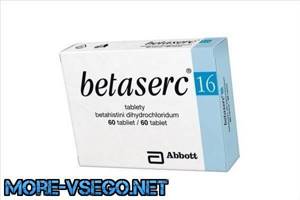
Folk remedy for nausea on the bus
Everyone’s vestibular system is different, but what to do if you get motion sickness in a car or bus, and the ride is long. It’s even worse when the trip makes your child sick.
To help you, we have found all the recipes, secrets, exercises and other folk remedies that can be used to prevent motion sickness. These are 35 effective ways that will definitely save you on the road.
To prevent motion sickness on the road, you need to hold a toothpick or a match in your front teeth (a match, of course, is safer, but not with gray inside). This action will distract you from focusing on the process of motion sickness, which will reduce the manifestation of symptoms.
A great way to combat motion sickness is cold (an ice pack for the head and neck). You can simply attach a cold bottle of water.
You can also place ice packs wrapped in a terry towel on the solar plexus and base of the skull and hold for 15 minutes.
Cut a sour apple into slices and bite lightly when you feel nausea and other unpleasant symptoms of motion sickness.
An effective remedy for motion sickness is ginger. It slows down the movements of the stomach walls.
Take a ginger root, peel it and cut off a small piece, sucking or chewing it lightly as you ride. You don't have to swallow ginger root if you don't like the taste.
Another way is to consume ginger in powder form. There is a ready-made one, or you can prepare it yourself by simply grinding ginger root. You need to take it in a volume of one gram an hour before the trip.
Acupressure massage can help relieve motion sickness symptoms. For example, use circular motions, pressure, or rubbing on the ears, palms, and wrists.
Acupressure helps a lot.
- Press your index finger on the dimple above your upper lip until you feel pain. And massage in a circular motion without moving your finger from the selected point. That is, you do not need to rub, but move your finger along with the skin above the lip.
- Then you need to do the same by pressing on the point immediately under the lower lip.
Another point is under the earlobe. When you feel that you are still seasick, you need to quickly press this point for several minutes.
And this is a recipe from the famous doctor Komarovsky: cut two apples into cubes, grate a little fresh ginger and pour a couple of glasses of boiling water over it. The drink should be drunk chilled, preferably with ice.
Take with you on the road tea with mint or ginger, still water, adding lemon juice. Sour drinks are refreshing and suppress nausea.
An excellent solution to the problem of motion sickness is pickled cucumber. Only you don’t have to eat it, but suck it during the trip, when nausea begins.
There is a motion sickness bracelet on sale. Its action is based on acupressure - pressing on certain points that affect the corresponding organs. The bracelet affects a point on the wrist that is associated with the digestive organs.
There are also bracelets for children. They do not contain any medications, are comfortable and are perceived by the child as a toy. In rare cases, the bracelet may cause sweating and slight swelling of the wrist. In this case, you should temporarily remove the product from your hands.
Brew tea (1 teaspoon of mint per 1 cup of boiling water). It needs to be infused for half an hour. When traveling, drink it with lemon as a snack.
An interesting and unusual method. Before traveling, you need to cover your navel with a white adhesive plaster (crosswise) so that it is completely covered with the plaster. Incredibly, it really helps with motion sickness.
Prepare a wine drink. Dilute 1 tsp. table salt in a glass of water and add the resulting salted water to 100 ml of dry red wine. This product should be used immediately before the trip.
And this is the way of sailors. Wrap your wrists with an elastic bandage. Because of this, a pressure difference is created, which prevents the occurrence of motion sickness symptoms. In addition, the bandages will affect a point on the wrists that will prevent nausea.
Another folk method that does not require special preparation. Simply, before the bus starts moving, hold a small round object (pebble, ball) in your left palm and do not open your palm during the entire trip.
This method also helps - bite the tip of your tongue and hold it. Of course, this method is only for adults or teenagers, and, moreover, the road must be free of bumps and potholes.
Take saltine crackers on the go. At the first sign of nausea, start sucking on them one at a time.
And now - one effective exercise.
- If you start to feel sick, but there is no vomiting yet, then lower your head between your knees, in this position, breathe slowly and deeply.
- Another option is to tilt your head between your knees, lower. Then raise it sharply after 5 seconds. Repeat the procedure several times.
A good recipe for motion sickness is an infusion of oats. The preparation is simple: pour 1 tablespoon of oats with a glass of boiling water, let it brew for 30–40 minutes, strain. 3-4 days before the trip, start giving your child one quarter glass 2 times a day.
Juice from fresh washed spinach is prepared using a juicer. Just like the previous recipe, start giving it to your child 3-4 days before or drink it yourself one quarter glass 2 times a day.
During the trip, it is advisable to swallow as often as possible: the ideal solution would be a cold drink, which you need to drink in small sips, or mint candy (it has been scientifically proven that mint suppresses the feeling of nausea, and sucking movements will lead to swallowing).
Another unusual way to get rid of motion sickness from one German professor is songs. If your child complains about feeling sick, try to distract him - for example, sing a song with him. You need to sing loudly and cheerfully.
Citrus fruits are a good way to relieve nausea: suck on an orange, tangerine, lemon slice or lemon, or put a lemon peel on your cheek.
Drip peppermint essential oil onto a napkin and sniff during nausea attacks. A more convenient option is to put a cotton ball with drops of oil in a special aromatherapy pendant and put it on your neck. You can use different essential oils: peppermint, chamomile.
Also, during the trip, chewing dry green tea will help against motion sickness.
For a child, you can use the following recipe: mix 1 teaspoon of honey with a drop of peppermint essential oil. Let the baby suck this sweetness in his mouth and then drink it with cool water.
Take a cotton swab and moisten it with ammonia, smell it.
To drink, use still mineral water or sour juice - you need to drink in small sips.
If during the trip you feel unwell, dizzy or suddenly nauseous, take several deep breaths through your nose and long exhalations through your mouth, then imitate a yawn several times by inhaling through your mouth.
Another exercise for motion sickness is shaking your head. Shake your head from side to side ten times. Just not too intense! If you feel dizzy, just shake your whole body slightly.
You can use a time-tested method - lollipops. They really help cope with motion sickness, but only if it is mild.
Regular chewing gum helps some. But if you start chewing it on an empty stomach, you may get motion sickness even faster. This happens because chewing gum promotes intense secretion of gastric juice.
When motion sickness occurs, nausea occurs as a result of signal transmission from the vestibular apparatus to the central nervous system. In this regard, the main task of drugs for motion sickness is to prevent such a signal.
- Vertigohel. A German drug that is not directly intended against motion sickness, but is quite often used for quite serious illnesses that are accompanied by vomiting, nausea and dizziness.
- Avia-More. A Russian homeopathic medicine that is aimed at reducing the irritating effects of the vestibular apparatus on the body. Used for symptoms of nausea, vomiting and other symptoms that are directly related to movement by any type of transport, it is a good preventive measure. Sold in the form of granules and caramels. The shape of the caramel clearly indicates that the drug can be used not only by adults and children.
- Dramamine. Croatian drug, which is prescribed for nausea, dizziness and other symptoms of various origins. Although in most cases this drug in tablet form is recommended for preventive use by patients suffering from symptoms of motion sickness in transport. It can be taken by children from one year of age. It should not be forgotten that the drug enhances the effects of antidepressants, sleeping pills and alcohol.
- Meclozine. This antihistamine from an American manufacturer is aimed at preventing vomiting. There are side effects, which, strangely enough, are expressed in the same symptoms that they are struggling with: vomiting, dry mouth, drowsiness.
- Validol. The drug contains only natural ingredients. This is valerian, which has a beneficial effect on the functioning of the heart, which is also known to our parents, and a solution of menthol in a specific valerian ester, which has a sedative effect, eliminating nervousness and irritability, and, in addition, an antispasmodic and coronary dilatator effect. In some cases, the drug is indispensable, such as motion sickness in transport (also during seasickness), and toxicosis, as it relieves nausea. But patients with high blood sugar should treat the medicine with caution.
Here are some simple tips to deal with car nausea while driving.
- If possible, sit in the front seat or in the middle of the back row so you can see the road in front of the car. Keep your eyes on the road through the windshield, not the side windows.
- When driving, keep your head straight - secure its position using a pillow or headrest.
- Ask the driver to turn on the air conditioning with the recirculation mode turned off.
- It is advisable to sleep.
- Do not use a smartphone, tablet, or game console with a screen that is on your lap. The same applies to books. Reading in a car very often leads to motion sickness.
- Do not sit against traffic in vehicles.
- It is necessary to remember that before absolutely any trip (going out to sea, flying on an airplane) you should not drink a lot of water or eat heavily.
- Alcoholic drinks must be completely avoided before or during the trip! Even so-called “weak” drinks are subject to exclusion. These are beer, shakes, champagne, low-alcohol cocktails, dry wines.
- Before your trip, practice positive self-hypnosis. To do this, master the basics of auto-training.
- Half an hour before your trip, it would be great to drink something soothing. For example, valerian tincture or tablet, peppermint tea, motherwort tea, or another sedative, preferably of herbal origin, if you do not have any other medications prescribed by your doctor
Perform these movements 1-2 times a day, starting with 1-2 minutes and gradually increasing the time of gymnastics to 5-10 minutes. At first, the movements should be slow and smooth, then they should be complicated by accelerating the tempo. At the beginning of classes, perform each exercise 2–4 times, later increase to 12–16.
- Starting position: stand straight with your arms at your sides. Tilt your head forward, then back. Make a rotational movement with your head to the right and left.
- Starting position: stand straight, arms bent at the elbows, resting on your waist. Turn your torso to the right and left, tilt forward and backward.
- Starting position: as in the second exercise. We rotate the body around its axis (2–4 turns to the right and left). Keep your head straight or tilt it towards your shoulder.
- Starting position: as in the second exercise. We jump on the floor or on a trampoline (low, medium, as high as possible) on two or one leg while simultaneously rotating the head.
source
Poor health during monotonous fluctuations in transport is called “sea sickness” in medicine and manifests itself not only on the water, but also on planes, trains, and cars. Motion sickness makes movement, especially over long distances, uncomfortable, so a person with such a problem should have medications that relieve nausea on hand.
Women suffer from seasickness more often than men, and about 10% of the population experience this problem throughout their lives. The main cause of motion sickness in transport is problems of the vestibular apparatus. This is the part of the inner ear that determines body position and orientation in space, even with closed eyes. It is fully formed by the age of 15, which explains the reason why a child suffers from motion sickness more often than an adult.
Mechanism of seasickness development:
- Destruction of the semicircular canals of the vestibular apparatus or their incomplete development (against the background of intrauterine pathologies, diseases in early childhood) leads to loss of the sense of balance.
- With active monotonous oscillations up and down, the brain begins to receive random signals that it cannot process correctly, which leads to motion sickness.
The situation can be aggravated by the conflict between the signals that come from the organs of vision (the picture before the eyes is motionless) and from the vestibular apparatus (the body is subject to vibrations) to the central nervous system, causing malfunctions in its functioning. This is manifested by characteristic autonomic symptoms: nausea, dizziness.
The clinical picture is individual and depends on the exact cause of motion sickness. Main features:
- lethargy;
- pale skin;
- dizziness (rarely – loss of consciousness);
- spots before the eyes, “floaters”;
- sweating;
- nausea (rarely vomiting);
- hypersalivation (excessive salivation);
- discomfort in the stomach;
- dry mouth.
Motion sickness intensifies if a person tilts his head down in transport (it is better to throw it back), tries to read, or look at the screen of a phone or tablet, which creates tension for the nervous system and visual organs. To relieve or prevent all symptoms, in addition to selecting pills, doctors recommend:
- drink a cup of warm tea before your trip;
- in transport regularly take small sips of clean water;
- do not overeat before and during travel, avoid heavy foods;
- get enough sleep before the trip (fatigue increases the load on the nervous system);
- forget about alcohol (including weak alcohol) before traveling;
- sit in transport facing the direction of travel and look at the horizon;
- half an hour before the trip, take sedative (calming) tablets or drink motherwort/valerian tincture.
The choice of tablets should be made according to the specific symptoms and causes of seasickness. Each pharmacological group has a large number of disadvantages. Based on reviews from patients and doctors, the top 10 medications that help prevent or reduce the severity of motion sickness include:
Anticholinergics (the best tablets in the top 10 for motion sickness)
tablets are not available in Russian pharmacies
have a prolonged effect, so they perform well during long journeys (sea cruises)
quickly suppress nausea, prevent vomiting
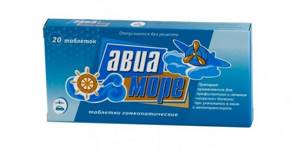
The products of this group are in the top positions in the top 10 for seasickness. They work by inhibiting the parasympathetic nervous system, eliminating the reaction to constant fluctuations that are unusual for the body. Such tablets against motion sickness are rarely taken on transport - they are mainly taken before travelling. Popular anticholinergics and antihistamines with M-cholinetic properties, included in the top 10:
Aeron (top of the top 10)
Effect onset time
Take 1 tablet before travel, use when traveling as needed.
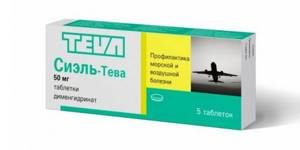
Tranquilizers are a better known name for anxiolytics. These are psychotropic substances that suppress anxiety and help with emotional overload. They depress the central nervous system and are used only during long journeys, which is why they are in last place in the top 10 for motion sickness. For adult patients, doctors prescribe:
Effect onset time
4–15 mg divided into 2 times, the exact regimen of use is determined by the doctor
Contraindications
Among all the medicines in the top 10 for motion sickness with vomiting, only Torekan is most effective - the rest give a less pronounced result and may not work at all, since they do not affect the vestibular system. The best antiemetic tablets for motion sickness in transport for children are Domperidone, which are allowed for children over 5 years old. Mostly for nausea while traveling, doctors advise:
antiemetic (prevention and elimination)
blocks the urge to gag without impairing coordination of movements and without causing tremor (shaking)
Effect onset time
if signs of motion sickness appear, take 1 tablet with water
1 tablet when symptoms of motion sickness appear, up to 3 times per day
for severe nausea or vomiting, take 1–2 tablets
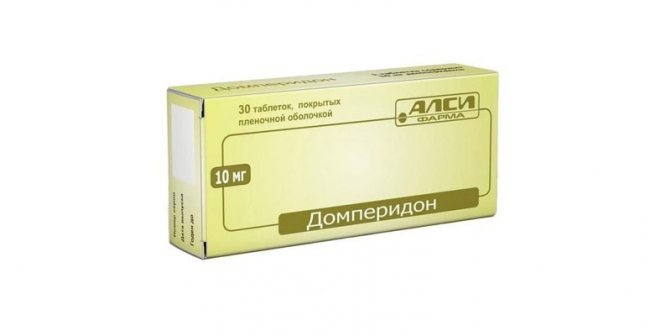
Avia-More is the most popular drug for motion sickness in transport from the group of homeopathic remedies, presented in the form of tablets for sublingual (sublingual) resorption. Used for the prevention and treatment of seasickness, air sickness, motion sickness in a car, and suppresses the urge to vomit. In the top 10 it came in last place due to its controversial effectiveness. Key Features:
- Effect onset time: 30 minutes.
- Directions for use: dissolve 1 tablet an hour before boarding the transport, if necessary, take 1 more every half hour. The maximum daily dose is 5 tablets.
- Contraindications: individual intolerance to the components.
- Side effects: allergic reactions.
source
Medicines for motion sickness include both medicinal and homeopathic remedies. The Croatian drug Dramina prevents seasickness. Its effect occurs 15-30 minutes after ingestion and lasts up to six hours. Since the components of the drug are excreted not only in the urine, but also in breast milk, the drug is prohibited during lactation. Dramamine tablets have a number of contraindications (cardiovascular diseases, bronchial asthma and others) and side effects (nausea, vomiting, drowsiness).
Side effects of the drug "Dramina": fatigue, drowsiness, vomiting, dry mouth.
The American drug Bonin is used to treat and prevent seasickness. The effect of taking it lasts for 24 hours; the product can be given to children from 12 years of age. The drug is taken one hour before the flight. The Polish medicine “Ciel” has an antiemetic effect. It is taken 20 minutes before a trip or flight, the effect of the drug lasts 4-6 hours. "Ciel" should not be used in children under 2 years of age, during pregnancy, lactation, epilepsy, or bronchial asthma. Side effects of the drug: vomiting, nausea, diarrhea, urticaria.
For the treatment and prevention of seasickness, the domestic homeopathic drug “Avia-Sea” is successfully used. It is taken 1 hour before the trip, then every half hour, but no more than 5 times a day. "Avia-Sea" can be given to children from 6 years of age; during pregnancy and breastfeeding, the drug should be taken only after consulting a doctor. The drug is contraindicated in case of hypersensitivity to the components; it can cause an allergic reaction. Homeopathic remedies for seasickness include Vertigohel (Germany). The drug is available in the form of drops and tablets. The drug is contraindicated for diseases of the thyroid gland; during pregnancy and lactation it is taken after consulting a doctor.
Before the trip, you can also take sedatives, you can choose herbal remedies in tablet form (valerian, motherwort). They also help with motion sickness on the road.
You can also take ginger capsules for motion sickness. This remedy is indicated for both adults and children; it has no contraindications (except for allergic reactions). The disadvantage of anti-sickness pills is the fact that once the body gets used to them, they stop working. If a person’s type of activity involves constant business trips, in this case it is recommended to strengthen the vestibular apparatus and nervous system; the necessary treatment methods should be advised by a doctor.
source
Every tenth person has encountered the problem of motion sickness in transport at least once in their life. We have prepared a list of the most effective methods and medications.
Every tenth person has encountered the problem of motion sickness in transport at least once in their life. As a rule, children whose vestibular apparatus has not yet fully formed suffer from this, but there are also adults for whom every trip is associated only with torment.
And although doctors say that there is no universal remedy for motion sickness, and you need to choose yours by trial and error, Arrivo has prepared for you a list of the most effective methods and medications.
Since motion sickness is associated with weakness of the vestibular system, the best prevention is to strengthen it. It has been proven that people who participate in sports involving coordination of movements, such as figure skating, do not suffer from this problem. Therefore, regular visits to the skating rink will be a useful and enjoyable option for strengthening the body. Skiing, swimming, trampoline jumping and even swings also have a beneficial effect on the functioning of the vestibular apparatus.
In addition, you need to prepare for the trip: get enough sleep, do not drink alcohol and reduce the number of cigarettes, do not eat anything spicy, fatty or fried. By the way, it is better to eat 2-3 hours before departure.
For those planning to fly, it is better to arrive at the airport in advance and choose seats above the wing, as there is the smallest vibration amplitude. The same applies to boat trips - the calmest place is in the middle part of the ship.
Long before pharmacists around the world began to fight seasickness, people were already suffering from it and were looking for ways to cope with attacks. The most popular were: a slice of lemon, sour candies and, oddly enough, ginger root. Moreover, ginger helps in any form - from caramel to cookies. Some travelers claim that even ginger beer can alleviate their plight.
Another effective, but difficult to implement method is communication. Conversation helps to take your mind off the sensations, but only helps with mild signs of motion sickness. In addition, it is not recommended to read books or play games on the phone, but to fixate in one position and concentrate on the stationary part of the cabin.
However, the most effective medications are still those produced all over the world. In Russia, the top five are headed by these funds.
- "Dramina" tablets, manufacturer Croatia, price about 80 rubles.
These tablets last up to 6 hours and are great for nausea and dizziness, but they affect the nervous system and cause drowsiness. After taking it, you should not drive or drink alcohol, and children should not take it either.
- “Avia-Sea” tablets or caramel, manufacturer Russia, price about 60 rubles.
The Russian remedy also reduces nausea, weakness and dizziness, without affecting the reaction. You can take up to five tablets a day, and the first one should be taken an hour before the start.
- “Cocculin” tablets, manufacturer France, price about 180 rubles.
One of the safest remedies, which does not give any side effects, is prescribed even to pregnant women. The tablets must be dissolved without drinking water. Take three of them a day on the eve of the trip and on the day of travel.
- “Bonin” chewable tablets, USA manufacturer, price about 50 rubles.
These tablets help with attacks of seasickness, but have a number of side effects. They can only be taken by children over 12 years of age and adults, one hour before departure. They are strictly contraindicated for drivers, as they significantly reduce reaction speed.
- Acupuncture bracelet “Travel Dream”, manufacturer Russia, price about 450 rubles.
The bracelets, designed for people of any age, act on the pericardial point located on the wrist. They begin to act within a couple of minutes and help throughout the entire journey.
source
A long-awaited trip, a change of scenery, anticipation of a vacation: all this gives us a lot of bright and positive emotions. But what to do if you get motion sickness in transport? Could this condition really ruin all the pleasant travel experiences? You can't let something like this ruin your holiday. You can combat this by taking some measures.
First of all, it is worth noting the reason why you get motion sickness while traveling. It's all about the work of the vestibular apparatus . This is the organ responsible for the position of our body in space and responds to any changes. The vestibular apparatus is located in the cochlea of the inner ear, in the semicircular canals, which are filled with fluid - endolymph. On the walls of these canals there are sensitive hairs that respond to any vibrations of the fluid and the movement of small otolith crystals. When the body changes its position, these crystals irritate the hairs, sending a signal to the brain.
In simple words, while moving in transport, the receptors of the vestibular apparatus perceive the body in a stationary state, while the eyes see movement and vibration around. This inconsistency leads to dizziness and nausea.
Most people react to these processes quite calmly, which indicates a trained vestibular apparatus. But some of us still have a hard time with the journey, which, on the contrary, is due to a lack of training of the vestibular apparatus, or to genetic characteristics. Although there are situations when even those who are prepared may have provoking external factors: smells, heat, food, overwork, pregnancy.
BEFORE YOUR TRIP:
1. Don’t overeat before the road, but don’t be absolutely hungry either. It is advisable to eat a couple of hours before the trip. Food should not be too fatty or fried. A light snack that does not entail a feeling of heaviness and discomfort.
2. Be sure to get a good night's sleep, especially if you plan to admire the scenery outside the window all the way. Lack of sleep increases the likelihood of motion sickness and nausea.
3. Don't drink alcohol the night before. This will aggravate the body's reaction during the trip.
4. Don't drink coffee. The drink contains substances that have an irritating effect on the gastric mucosa (especially vulnerable in a hungry state), which can lead to nausea and discomfort.
5. Buy special anti-motion sickness products at the pharmacy. There are currently a huge number of them. But first consult with your doctor to choose the drug that is right for you.
6. If possible, engage in vestibular training. These can be swings, carousels, as well as special exercises. For example, body turns: stand up straight, place your feet shoulder-width apart and turn your body with maximum amplitude from side to side. At the same time, the neck and gaze are motionless. Feel the movement of objects around you. Perform movements easily and naturally, within the limits of comfort. Don't make yourself dizzy. Start with a small number of repetitions, gradually increasing the number of repetitions over and over again, day after day.
7. And of course, don’t set yourself up for possible motion sickness. Think about pleasant things, about the upcoming trip, vacation. Self-hypnosis is an important point.
ACTIONS DURING YOUR TRIP:
1. Sit at the very front of the vehicle; if you are traveling by car or bus, choose seats as close to the driver as possible, facing the direction of travel (avoid sitting with your back turned).
2. You should not read on the road, watch movies or play on your phone. Do not irritate the already overloaded vestibular apparatus. You can distract yourself by listening to music on your player.
3. If possible, look forward (out the driver's window) and into the distance. Don't focus on small objects.
4. Don't focus on your condition. Distract yourself: by talking with fellow travelers, thinking about something pleasant, counting, or music.
5. Chew something minty (gum, candy). Chewing movements will distract you, and the mint flavor will fight the onset of nausea.
6. Try to keep the vehicle from getting stuffy. Open the window, ask to turn on the air conditioner. Enough oxygen must be supplied to allow easy breathing. The same goes for overheating. The temperature in the cabin should be comfortable.
7. Get some sleep if: — you didn’t get enough sleep before the trip, don’t torture yourself: your body needs rest — you’re still afraid that unpleasant symptoms are inevitable.
This way, the travel time will pass faster, and motion sickness will not overtake you.
8. As one of the methods to combat motion sickness, try breathing deeply.
9. To “deceive” the vestibular apparatus, move your legs, shifting from heel to toe. This way you will reduce the degree of inconsistency between signals entering the brain from different senses. The vestibular system will think that you are walking.
10. Apply something cold to your forehead or back of your head. This will invigorate you and help improve the overall condition of your body.
11. Use acupressure techniques. For example, rub and press the area of the ears, palms, and soles.
source
|
|
|
|
|
|
|
| |
|
| |||||||
|
|
| ||||||
|
|
| ||||||
|
|
| ||||||
|
| |||||||
|
|
| ||||||
|
|
| ||||||
|
|
| ||||||
|
|
| ||||||
Prevention of motion sickness in transport
If you get motion sickness in the car while traveling, you need to know what to do to avoid unpleasant consequences.
Follow these simple tips:
- get enough sleep - a relaxed central nervous system can more easily tolerate uncomfortable maneuvers while moving;
- do not overeat or starve - before and during the trip, the best food will be fresh fruits and vegetables;
- do not drink too much - give up sweet soda and heavy drinking, give preference to plain water and fermented milk drinks;
- give up addictions - the day before your trip and during the trip, you should not indulge in alcohol, also limit the number of cigarettes;
- take medications - before setting off, take pills to prevent motion sickness;
- move less - when traveling, take a comfortable position, the chair should be half-bent;
- take a sleeping pill – if you take a sedative, the trip will be much easier.
Many medications help with motion sickness in transport. Such tablets have a certain principle of action, and also have side effects and contraindications. Before you go on a trip, choose the product that is suitable for you and carefully read the instructions.
Choosing remedies for motion sickness in transport

Let's say we're going on an excursion. He, a classmate, a handsome guy and the ringleader, enters the salon with a forced smile. Huddles in a corner. Silent. After the first bumps it turns pale. Then it turns green. And finally, with wild eyes, he rushes towards the exit, covering his mouth with a bag. Next came a stop.
The rest of the way, the poor guy half-lyed and half-died in his chair. Not only he, but also his neighbors need the packages.
In fact, about 10% of people experience motion sickness to one degree or another. Mostly children under 8 years of age are affected. I get motion sickness on buses, in cars, on water, on airplanes. Will they really have to stay at home even in the summer because of these inconveniences?!
Price: about 180 rubles
Useful tips and remedies for motion sickness in transport
Motion sickness, also called motion sickness or motion sickness, is one of the most common inner ear disorders caused by repetitive motion.
Motion sickness is not a disease as it can affect anyone, although some people are more sensitive to it. It most often occurs in children from 2 to 12 years of age, in women and, especially, pregnant women, and people prone to migraines.
In addition to sea travel, motion sickness can occur due to car movements or turbulence on an airplane.
Movement sickness occurs in part when there is a discrepancy between the information the brain receives from the vestibular system and what the eyes see. For example, if the eyes tell the brain that a person is motionless inside a ship's cabin, but the vestibular system senses the head bobbing due to the movement of the ship, this causes a mismatch in the brain and leads to motion sickness with associated symptoms.
Causes
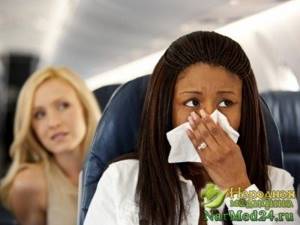
One of the symptoms of motion sickness is nausea
Most people suffer from seasickness. In children, it usually occurs on swings and in ground transport, in adults - on an airplane and at sea.
The causes of motion sickness in transport are usually cited as overstimulated receptors of the labyrinth of the inner ear during movement, inconsistency of sensory and visual information coming from the receptors of the labyrinths of the inner ear to the brain. That is, a person feels and sees his movement in space, but muscle tissue receptors send information about his immobility to the brain. The cause of motion sickness can be insufficient training of the balance organ, that is, the vestibular apparatus, as well as an individual predisposition to the manifestation of motion sickness.
Fear, elevated air temperature, unpleasant odors or sounds, alcohol intake, strong smell of tobacco smoke or gasoline, emotional stress and fatigue, severe apathy, pregnancy, and even the peculiarity of transport can also lead to kinetosis.
How to prevent motion sickness in the car, on the plane, on the bus and at sea
There are several things you can try to prevent motion sickness or at least reduce its symptoms.
1. Monitor your food, drink and alcohol intake before and during travel. Avoid excessive consumption of drinks and foods that are not suitable for you or cause you to feel overeated. Heavy, spicy and fat-rich foods can aggravate motion sickness. On long trips, eat small and frequent meals.
2. Also avoid strong odors to prevent nausea.
3. Choose a place where you are least likely to experience motion sickness. On an airplane these are seats in the middle near the wing; on a ship these are cabins on the lower decks and in the central part of the ship.
4. Do not sit facing backwards from the direction of travel.
5. The larger the vehicle, the less susceptible you will be to motion sickness. For example, you will likely experience less seasickness on a ship than on a small boat.
6. In a car, the best seats are in the front where you can see through the window. It is not recommended to sit in the rear seats and look at objects moving inside the car (for example, a book).
7. Don't read while traveling if you are prone to motion sickness.
8. While driving, try to focus your gaze on the horizon or a fixed point.
9. Open a hatch or other source of fresh air. Smoke may worsen symptoms.
10. Some people advise closing your eyes to avoid sensory confusion.
Prevention and treatment

To prevent motion sickness on an airplane, it is better to avoid heavy foods.
In order not to suffer from motion sickness in a car, plane or other transport, before a long trip it is better to refuse food, alcoholic and highly carbonated drinks. On the road, it is advised to distract yourself from the thought of motion sickness, for example, watch the road, talk with your neighbor, look at objects, but under no circumstances read. Those who are predisposed to seasickness should take care in advance to take seats where the transport will not rock so much. For example, you cannot take seats in the opposite direction to the movement.
To eliminate the symptoms of kinetosis, it is recommended to use antihistamines such as dimenhydrinate (Dramina), diphenhydramine (Diphenhydramine), meclozine (Bonin). For motion sickness, medications that contain betahistine (Vestibo, Beta) and antiemetics help. If symptoms of this disease appear, you can suck on a slice of lemon or anti-sickness lollipops, breathe slowly and deeply, and follow the rhythm set by the transport. These measures will have a reflex-stimulating effect on the body.
If an attack of dizziness occurs unexpectedly, you need to calm down and not panic, sit down and try to focus your gaze on one object without closing your eyes. If you experience unpleasant and painful sensations, numbness in the arms or legs, speech impairment, severe pain in the abdomen and chest, you should consult a doctor.
Motion sickness remedies for children
Motion sickness most often occurs in children aged 2 to 12 years. It is recommended to prevent motion sickness in a child.
· Reduce the amount of sensory information. Encourage your child to look out the car window often rather than focus on books, games or movies while driving. It is best if the child sleeps during this time.
· Do not give your baby spicy or fatty foods and do not feed him or her heavily just before or during travel. If it's a short trip, it's best to eat nothing at all, but if it's a long trip, offer a small, simple snack, such as crackers and some water.
· Distract your child. Try to distract your child by talking, listening to music, or asking him to sing.
· If your child experiences symptoms of motion sickness in the car, stop as soon as possible and let your child out to walk or have him lie on his back for a few minutes with his eyes closed. You can also place a cool towel on his forehead.
· Small swallowing movements can reduce nausea. In this case, you can give the child a sucking candy, preferably mint.
Medicines for motion sickness in transport
There are also some medications for motion sickness:
Dramamine (dimenhydrinate) is the most popular antihistamine for motion sickness, which can be used from 2 years of age. It reduces symptoms of nausea by blocking histamine receptors in the inner ear. The drug is taken half an hour before the trip, and it acts for about 3-6 hours: adults - 1-2 tablets, children from 1 to 6 years old - ¼ - ½ tablets, children from 7 to 12 years old - 1/2 - 1 tablet. The drug is taken every 4-6 hours as needed.
Be careful as the medicine causes a number of side effects such as drowsiness and weakness. It is not recommended to drive or engage in other activities that require concentration and clear vision. The drug is contraindicated during pregnancy and breastfeeding.
Avia-sea is a homeopathic medicine that is approved for children from 6 years of age. It is taken an hour before the intended trip and, if necessary, every half hour, but no more than 5 tablets per day.
Cocculin is another drug from the arsenal of homeopathic remedies. It is allowed for children from 3 years of age. The tablet is dissolved under the tongue half an hour before the trip.
Vertigohel is a homeopathic medicine, available in the form of tablets and drops. The tablets are taken one hour before travel. One tablet (or 10 drops) is dissolved under the tongue, and the drops are diluted in 100 ml of water and taken every 15 minutes, but not more than 2 hours. The drug is contraindicated in children under 18 years of age, during pregnancy and breastfeeding.
There are also many other medications for motion sickness, but they should only be taken after consulting a doctor.
Ways to combat motion sickness
1. One of the mandatory rules that I learned from my own experience is that during the trip you cannot sit with your head down and look at the floor, read, look at photos on your phone or play on it; we postpone all this until we arrive at the final destination of the trip. I accidentally experienced for myself what looking at magazines while driving in the car leads to.
I had to drive literally about 15 minutes, and at that time I was offered to look at an advertising brochure for Italian tiles for the home. When we arrived at our destination, I knew for sure that Italian tiles were not my thing, I was terribly sick of the mere sight of them.
So we sit the child in the front seat of the car, or, if he is still a toddler, in the middle of the back seat so that he can look straight through the windshield. This option is not always possible on a sightseeing bus; for example, our seats were located closer to the rear of the bus, so be sure to seat your child by the window, there is a very good panoramic view that can be compared to the view from the front.

2. Of course, we don’t eat sweets or fatty foods before the trip, and take food at least an hour before the trip. But during a long journey you cannot do without food.
Options for food that we usually take with us: lean chicken or lean meat, eggs, pickles (fresh tomatoes are fine), soft cookies, for example, different types of crackers (you can take more of them, this is what children carry best) , the best fruits are sour or sweet and sour apples, sweet and sour grapes.
I gave an example of our usual set of products, but you can vary the assortment depending on what suits you and your child.
What to drink: plain water (this is the best option), still mineral water (if the child drinks this), sour berry fruit drinks, tea with lemon (and/or mint, if the child likes it). You need to drink little by little and in small sips.
3. Try buying mint-flavored lollipops or some sour flavor. We usually buy lollipops with sour fillings, blackcurrant or lemon, from the pharmacy, and periodically (every 30-40 minutes) I let the child suck them.
I read that ginger is good for nausea, I’ll have to try buying candies with this flavor or, as an option, dried fruits made from candied ginger, although I don’t think that the child will be particularly delighted with the ginger taste. Regarding sweets, check with your child; after all, they contain sugar and are not good for everyone on the road.
4. If you have to travel far, then we create conditions for the child to sleep comfortably; during sleep, the road is much easier to bear. Of course, if your fidget is growing up, then it will probably not be easy to put him down, but, usually, children quickly begin to doze off on a regularly swaying bus.
In general, our sleep situation worked out well: firstly, all departures were most often early and early in the morning, and during the trip it was possible to get some sleep. Secondly, we prepared and purchased all the necessary soothing accessories: special pillows for traveling in transport, warm socks for feet, blankets for covering, we selected clothes that were more comfortable, in short, for most of the journey the child slept peacefully.
5. The next thing is pharmaceutical drugs. We used to take Aeron, but it disappeared from pharmacies and now we buy Avia-Sea tablets instead; they seem a little stronger to me than Aeron.
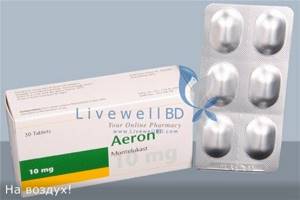
The tablets are homeopathic, can be taken by children from 6 years of age, the first dose is taken 1 hour before boarding a transport vehicle, then every 30 minutes, but it is not recommended to take it more than 5 times a day.
Naturally, if you travel for almost a day, then 5 doses is too few, so they either stretched it out over the whole day or exceeded the dose. I can’t say that it’s a panacea, but with constant use there is a slight effect.
They say that the anti-sickness drug Dramina has a good effect, but we don’t have it in pharmacies in our city, so, unfortunately, I can’t evaluate the effect. I will try to buy it to order.
5. Well, one more interesting homeopathic remedy that I would like to highlight. As always, in search of a remedy for motion sickness, scouring the Internet, I turned to my favorite store Iherb.com: since it is declared as a pharmacy, then it must certainly have the corresponding medicine. It really turned out, although in an unusual form - these were “Sea Band” anti-sickness bracelets.
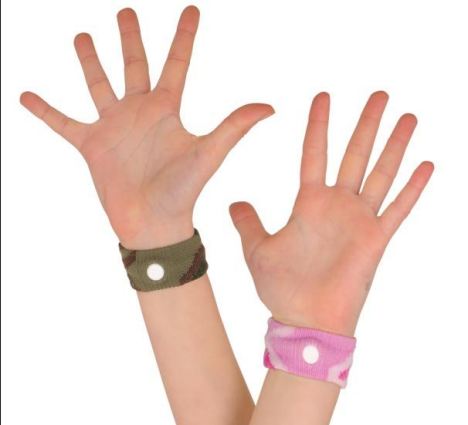
I can’t say for myself that I’m a fan of homeopathy, my opinion is that if you’re sick, treat yourself with pills, and everything else comes as a pleasant addition to the main treatment (I know that the opinion is controversial, well, that’s what it is), but as they say, “for lack of fish and cancer, fish “It must be admitted that there are no 100% effective tablets for motion sickness.
What are bracelets? They are made of knitted fabric and equipped with plastic convex circles, which, when put on, are pressed against the wrist - like wristbands.
According to the manufacturer, the bracelets help against nausea not only during motion sickness, but also caused by toxicosis in pregnant women, and they are also recommended for use in hospitals to relieve the symptoms of nausea caused by chemotherapy and anesthesia.
For clarity, as always, photos.
Folk remedies for nausea and motion sickness
Ginger is one of the effective remedies for motion sickness. It slows down the movements of the stomach walls. Take a ginger root, peel it and cut off a small piece, sucking or chewing it lightly as you ride. You don't have to swallow ginger root if you don't like the taste. Ginger can also be taken in powder form. Adults are advised to take 1 g of ginger root powder an hour before traveling.
Cut an apple into slices and bite lightly when you feel nausea and other unpleasant symptoms of motion sickness.
The scents of mint and lavender are effective remedies for nausea. Use essential oils by placing a few drops on a tissue and inhale as you travel.
Treatment of motion sickness with folk remedies
Before the trip, you can take a soothing infusion prepared with herbs. You can also drink it in small sips while driving. Folk remedies from medicinal plants alleviate a person’s condition during travel. Some decoctions can be used as prophylaxis and to quickly restore the body after a trip.
Mint tea
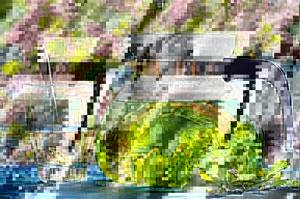
Mint acts as a sedative that can be used to prevent motion sickness. Peppermint tea helps relieve nausea and other unpleasant symptoms of motion sickness. To do this, boil 2 teaspoons of mint for 5 minutes in 500 ml of water. Let the decoction infuse for half an hour, drink 1 tablespoon 4 times a day.
Ginger for motion sickness
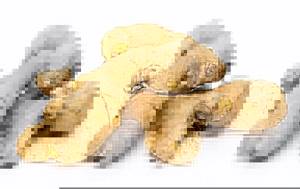
Ginger is considered one of the most effective folk remedies for motion sickness. It reduces the pulsation of the stomach walls, which helps prevent unpleasant symptoms during kinetosis. Take a ginger root, peel it and cut off a small piece, sucking it or chewing it lightly as you ride. You can take it in powder form in the amount of 1 g for an adult an hour before the trip. You can also prepare the following mixture. To do this, mix 130 g of grated ginger with 4 chopped lemons, pass through a blender and add 200 g of liquid honey. You should drink the resulting product 1 tablespoon at a time. Instead of honey, you can add boiling water in the same amount.
Cranberry juice

Sour fresh berries will help with motion sickness, relieve nausea and other unpleasant symptoms. To prepare fruit juice you need 150 g of ground cranberries. The pulp is separated from the juice, poured with 1 liter of water and put on fire until it boils. After this, the solution is infused for about 5 minutes, filtered and juice is added. Drink in small sips, you can sweeten it slightly with honey.
Apple infusion

To prevent kinetosis, you can use a sour apple. It should be cut into slices and lightly bitten when you feel nausea and other unpleasant symptoms of motion sickness. For the same purpose, you can prepare a healing drink. You need to add 1 tablespoon of chopped dry apples to 250 ml of water, boil for 15 minutes and leave in a warm place for 50 minutes. Add 1 teaspoon of honey to the cooled and strained infusion and drink in small sips.
Lavender for motion sickness

The scent of lavender is an effective remedy for nausea caused by motion sickness. You can use essential oil by dropping a few drops onto a napkin. It is recommended to inhale this product during the trip. You can prepare an infusion and take it in small sips while traveling. To do this, pour 2 teaspoons of dried lavender flowers into 1 glass of boiling water, leave for 6-8 minutes and strain. It is recommended to drink this solution every two hours, 1 tablespoon.
Verbena flower infusion

You need 4-5 tablespoons of dried or fresh verbena inflorescences, pour 200 ml of boiling water, close tightly and leave for half an hour. You need to take this solution half an hour before your trip or during the trip in small doses.
Anti-sickness bracelet
Motion sickness bracelets are now available as a safe alternative solution to this problem.
The action of the bracelet is based on acupressure - that is, pressing on certain points that affect the corresponding organs. The bracelet affects a point on the wrist that is associated with the digestive organs.
The bracelet can be put on immediately before the trip. However, it is worth remembering that the effectiveness of this remedy has not been proven.







